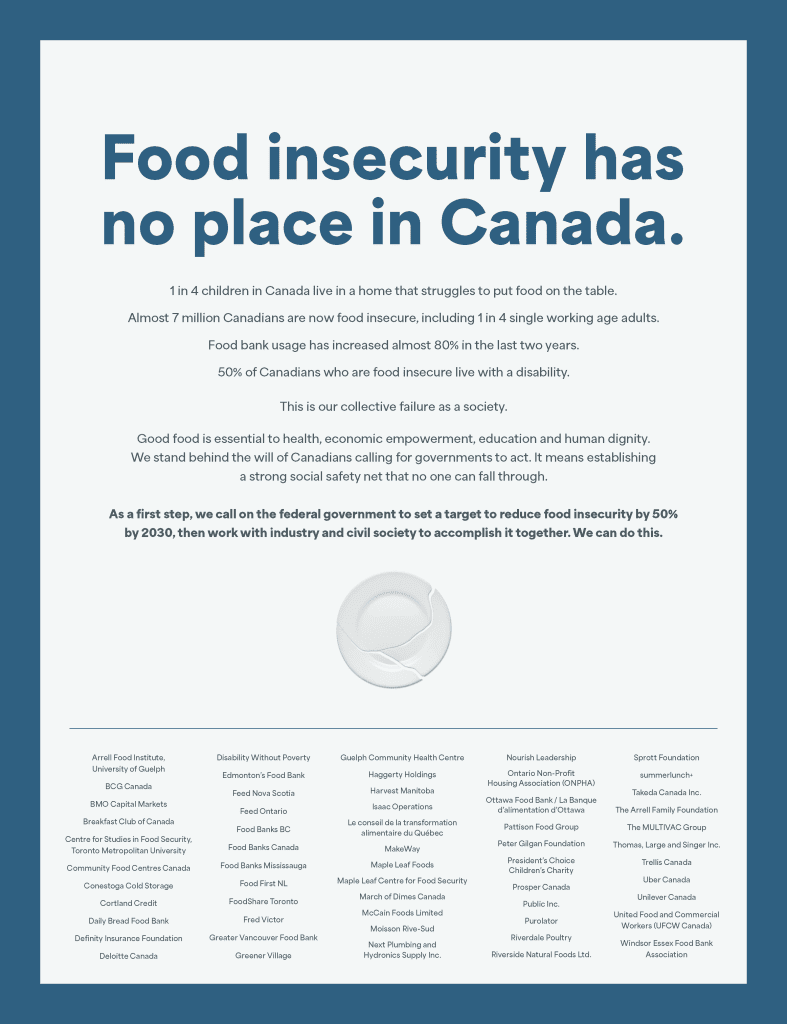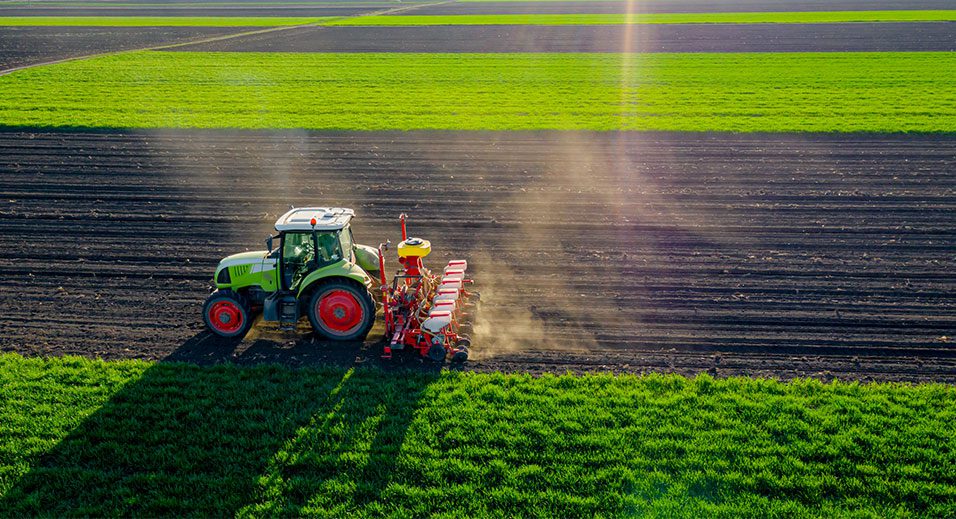Shedding light on the complex landscape of food insecurity in Canada and the need for collaborative action.
By Sarah Stern, Director of Community Involvement & Executive Director, The Maple Leaf Centre for Food Security
It has been close to seven-and-a-half years since the Maple Leaf Centre for Food Security (‘the Centre’) was launched. We started with a big, bold goal of working collaboratively, across sectors, to see food insecurity in Canada reduced by 50% by 2030.
At the time of launching in 2016, there were four million people struggling to access the food they needed — that was one in eight households. This seemed like a staggering and unacceptable number.
But truly, we had no idea what was yet to come.
Together, we quickly learned a lot. We were fortunate to have many people and organizations help us on our journey. While the majority of my career had been focused on social change, I will admit to being pretty naïve about the issue of food insecurity and what it would take to drive change. It quickly became clear that this issue was more complex than we had initially thought, and it was not one that would be solved by more food or by scaling charitable programs.
Each year, the Centre hosts an annual Food Security Symposium in which we reflect on and address the issue of food insecurity in Canada. At our very first Symposium in 2018, one of our speakers remarked that there will never be only one thing that leads to someone being food insecure — and no one thing will resolve it either.
For a while, the more I learned, the more I would shy away from this big goal that we had — it was scary and seemed a bit audacious as it felt to me that there was so little that we could control and contribute. This felt different from the goals we set as a corporation — ones that we could directly influence and measure.
Navigating poverty and food insecurity in Canada
In 2018, the poverty reduction strategy was announced and with it, a target to cut poverty in half. At the time, I exhaled, and thought, “Wow, this is what we needed. This will ensure that this goal is reached.” I suddenly felt more confident in speaking to our stated goal again.
Within a year, however, I learned that reducing poverty won’t necessarily result in a significant reduction in food insecurity. In fact, we now know that close to 80% of people experiencing food insecurity have an annual income that puts them above the poverty line!
In 2020, as we all faced the COVID pandemic together, food insecurity became a concept more and more people began to understand.
Later that same year, we started our annual public insights study to understand what Canadians were thinking about when it comes to social issues. We asked people about issues that concerned them — at the time, the ability to afford food for their family was a top issue for 12% of respondents. Fast forward to last year, it became a top issue for 29% of them.
A wake-up call for action on reducing food insecurity
In the prime of the pandemic, there was an incredibly high level of collaboration across sectors. And there was quick action. People often say it takes a long time for government programs and policies to roll out but recall how quickly the much-needed CERB rolled out, providing a lifeline for so many. It is possible to move fast when action is needed.
There were hopes for what our post-pandemic society would look like. We probably all used the term ‘build back better’ more than once. But the post-pandemic reality has not been better for most people. The impact of inflation and rising costs have dramatically affected the ability of individuals and households across Canada to afford basic necessities.
The stats today are somewhat horrifying.
And according to the official food insecurity data — collected in the first six months of 2023 — 8.4 million or 22.9% of Canadians, including more than one in four children, are experiencing food insecurity.
Last year, there was a 30% increase in food bank use across Canada: 40% in Ontario and a 50% increase in Toronto! There was an 154% increase in new food bank users in Toronto, as one in 10 people in the city are now accessing a food bank.*
This makes me wonder why more people are not outraged!
Food insecurity has placed a tremendous weight on people working in the sector. The conversations I have with folks working on the frontline of the food insecurity crisis are about exhaustion, fear, and even a lack of hope that change is possible.
But how do we create hope? We can build bridges across sectors and governments. We can think about how much further we can go and how much more we can achieve by working together and by setting big goals.
Accelerating change towards zero hunger in Canada
This brings me back to the target we announced when we first launched. As of 2024, there are now six years to reach it. I believe that there is a path towards achieving it and I feel a greater sense of urgency… more now than ever. I also know we need to speak up louder. No more shying away from this. They are called BHAG’s — Big Hairy Audacious Goals — for a reason: because they are something big to reach for and work towards. After all, goals and targets work and help drive aligned action.
The Federal Government’s poverty reduction strategy set a target to reduce poverty by 50% by 2030 — and they have made great strides toward reaching that goal. Programs like the Canada Child Benefit has helped lift many families above the poverty line. And just this week, a $1B commitment for a National School Food Program was announced which will help children learn and thrive! It’s also why we at the Centre so strongly advocate for the proposed Canada Disability Benefit, which could do the same for helping to lift people living with disabilities out of poverty and food insecurity. The Federal Government’s target has driven action.
There is an overwhelming consensus among Canadians that now is the time for governments to seriously address social issues like poverty, racism, and inequality. In fact, 81% of respondents to a recent poll feel that governments should do more to help people living in poverty and hunger in this country. In a series of paired choices forcing respondent to pick which is more important, ‘addressing food insecurity’ was chosen 58% over ‘lower personal and sales taxes’.
We know that clear targets create accountability and alignment. We also know that there is a public will for change and we need to harness this.
Over the past few years, more and more organizations have started recommending that governments commit to a target to reduce food insecurity by 50%. We have jointly advocated alongside Community Food Centres Canada and Food Banks Canada, and in December 2023, we published a call to action that close to 60 organizations from across sectors signed onto.

We need to accelerate change — there is a lot of work to be done to reduce food insecurity and see zero hunger in Canada. But together, working collaboratively across sectors toward an aligned goal, we are hard to ignore, and we can drive action.
*Sources:



